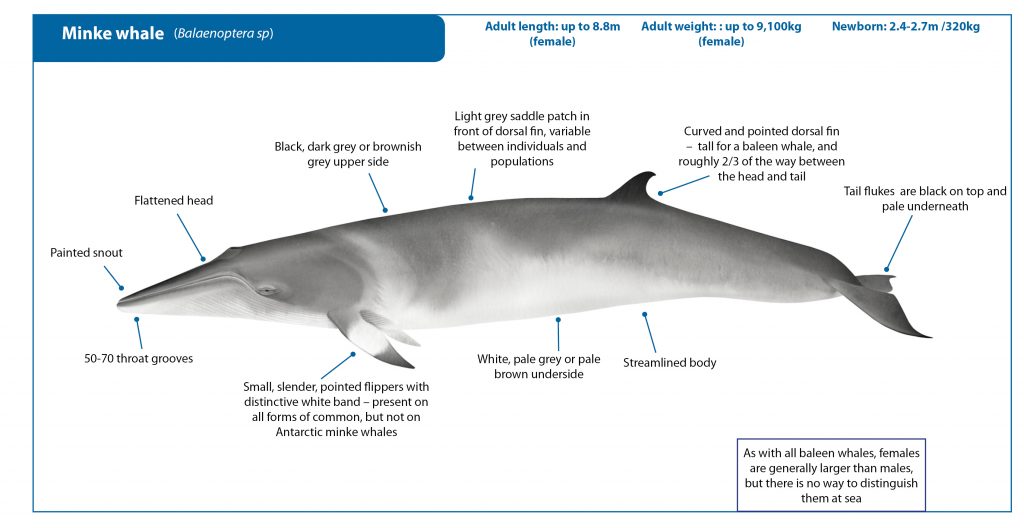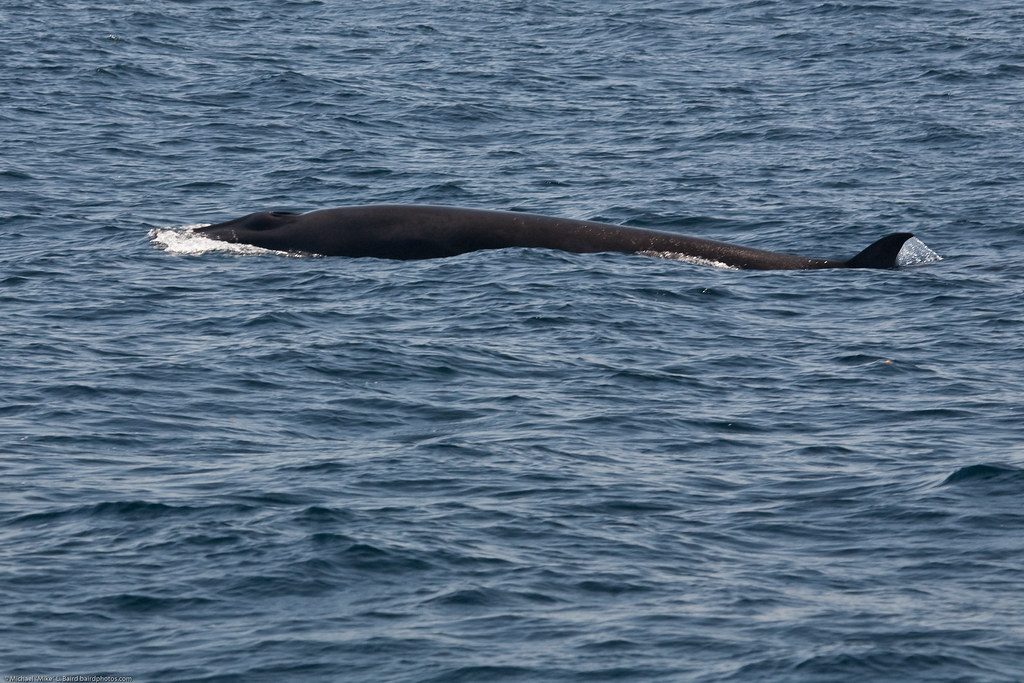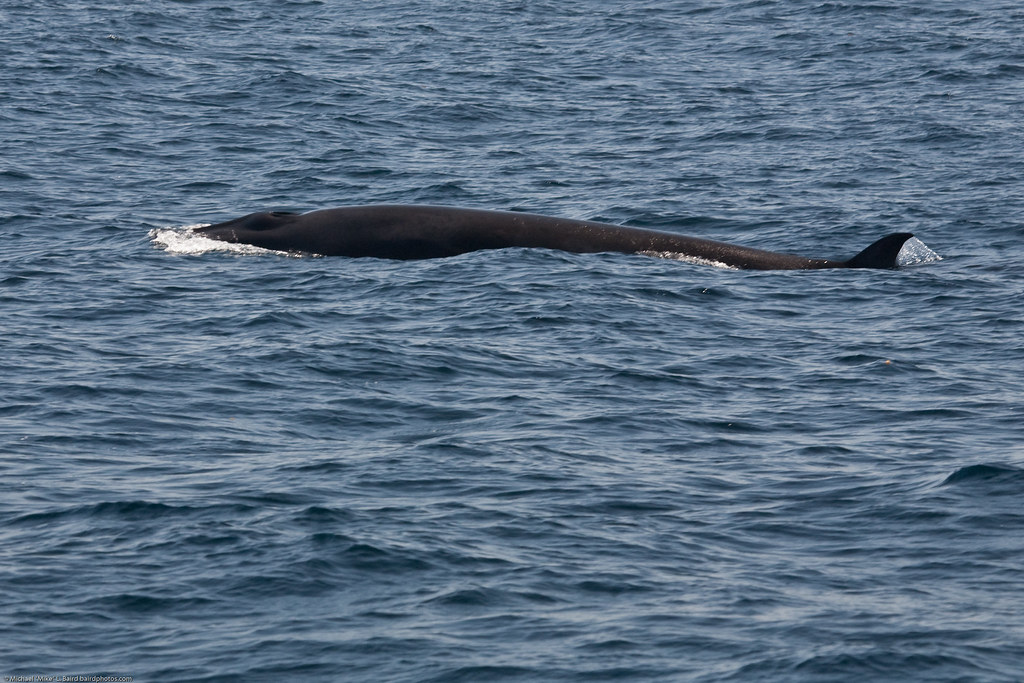Big surprise on Sunday 10 November in one of the wind farms in the Belgian part of the North Sea: maintenance technicians observe a whale and can make a short video before the animal disappears under water. The images are delivered to RBINS: it turns out to be a minke whale. A rarity of which only five other cases from Belgian waters are known from the past 20 years. Only two of these earlier cases concerned live animals.
On Sunday 10 November, maintenance technicians were left stunned when they saw nothing less than a whale swimming past a wind turbine. The observation took place in the Norther concession zone, about 23 km from the port of Zeebrugge. Kenny De Groote succeeded in making a short video, which was sent to scientists of the Royal Belgian Institute of Natural Sciences for documentation.
« The images unmistakably show a rorqual, and the short fragment is fortunately of sufficient quality to identify the animal as a minke whale. » says Kelle Moreau, who was the first to receive the images and forward them to his colleagues. « Based on the overall impression of size and shape of the animal, and especially because of the extensive white zones at the base of the pectoral fins (flippers), I immediately thought of a minke whale » adds Jan Haelters, marine mammal expert from RBINS. « The shape and location of the dorsal fin, and the presence of a lighter zone behind the pectoral fins (the so-called « chevron »), also contribute to the identification that was confirmed by several consulted experts. »

Adult minke whales (Balaenoptera acutorostrata) reach a maximum size of 9 to 11 meters, with females becoming slightly larger than males. The minke whale is one of the smaller species of baleen whales, and is not considered a rare or endangered species.

Although the minke whale is part of the fauna of the North Sea, its range is mainly limited to its northern and central part. The species is rarely found south of the Dogger Bank. However, research has shown that minke whales more often occur more to the south in recent years, probably as a result of changes in the ecosystem. From the Belgian waters, only the following cases are known to us from the last 20 years:
- 2004: found dead at sea and landed; victim of by-catch
- 2013: stranding; died by swallowing a large amount of plastic
- 2013: observation at sea
- 2017: decomposed carcass at sea
- 2017: observation at sea
The skeleton of the minke whale from 2004 (owned by RBINS) can currently be admired in the permanent exhibition ‘Sea Change’ in the Provincial Visitor Centre Duinpanne in De Panne.


